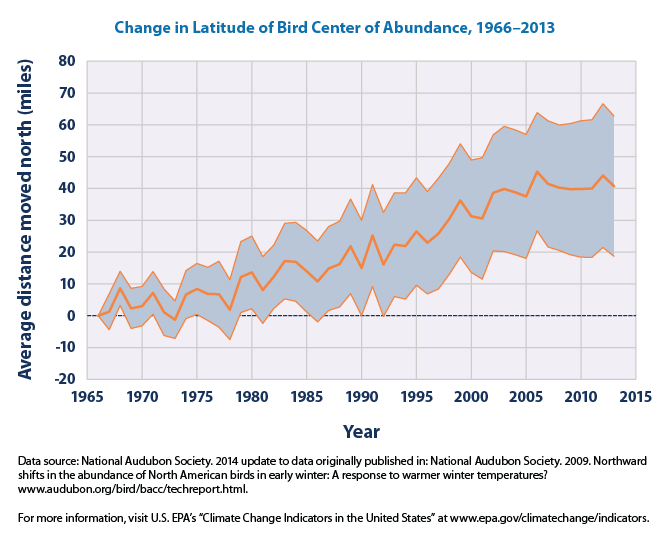DID YOU KNOW?
- Over 50% of North American bird species are considered to be ‘seriously threatened’ by a changing climate.
- The winter range for 305 North American birds shifted northward by an average of 40 miles between 1966 and 2013.
Scientists from the National Audubon Society have released a report that looks at how birds in North America could be affected by a changing climate. For each bird species studied, they looked at the range of temperatures, precipitation, and seasonal change each species needs to survive, and then mapped where their ideal climatic range may be found in the future as the climate changes.
Of the 588 North American bird species studied, they concluded that 314 of them will lose more than 50% of their current climatic range by 2080. For instance, the Common Loon could lose 56% of its current summer breeding range and 75% of its current winter range by 2080 due to changing climate conditions.
As the current habitat ranges of many bird species shrink, some birds may travel to other regions that fit their climatic range. These birds may face new competition for limited food and resources, and encounter new predators or competitors who make it difficult or impossible to survive.
LEARN MORE
- Birds aren’t the only animals on the move. Check out NEEF’s newest Activity Guide on animal migration to learn more about monarch butterflies, salmon, birds, and other migratory animals.
- The chart below illustrates how the winter range for 305 North American birds shifted northward by an average of 40 miles between 1966 and 2013. These trends can be closely related to increasing winter temperatures associated with a changing climate.

Republished from NEEF.


